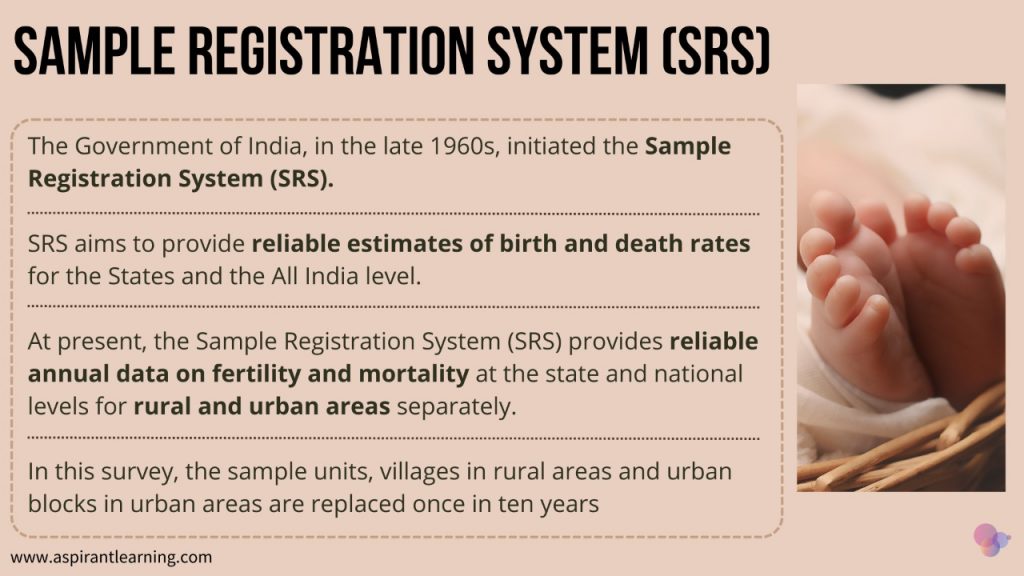News Highlights:
The report on child mortality, Levels and Trends in Child Mortality – by the United Nations Inter-agency Group for Child Mortality Estimation (UNIGME) estimates that globally, five million children died before their fifth birthday (under-five mortality) in 2021.
Key Takeaway:
- Over half of Child Mortality(2.7 million) occurred among children aged 1-59 months, while the remainder (2.3 million) occurred in just the first month of life (neonatal deaths).
- India’s share in child mortalities was estimated at 7,09,366 under-five deaths, 5,86,787 infant deaths (death before first birthday); and 4,41,801 neonatal deaths.
UN report on two neglected challenges:
- Preterm births:
- Preterm births mean children being ‘born too early’ and born alive before 37 weeks of pregnancy.
- This is a challenge because these ‘preterm babies’ are two to four times at higher risk of death after birth than those born after 37 weeks of gestation.
- Globally, one in every 10 births is preterm in the world
- In India, one in every six to seven births is preterm.
- India has a high burden of preterm births, meaning newborns are at greater risk of complications and mortality.
- Studies have shown that preterm births contribute to one in every six under-five child deaths.
- Three out of every four deaths from preterm birth-related complications are preventable.
- Stillbirths:
- A baby who dies any time after 22 weeks of pregnancy but before or during the birth is classified as a stillborn.
- Globally, an estimated 1.9 million stillbirths happened in 2021.
- In 2021, the absolute estimated number of stillbirths in India (2,86,482) was more significant than the death amongst children 1-59 months of age (2,67,565).
- The rates and number of preterm births and stillbirths are unacceptably high and drive neonatal, infant and child mortalities upwards in India. Thus, they demand urgent interventions.
- Proven solutions:
- The majority of stillbirths and preterm births can be prevented by scaling up known and proven interventions and improving the quality of health services.
- To reduce both stillbirths and preterm births, the focus must be on the following:
- increasing access to family planning services
- improving antepartum services such as health and nutrition
- including the intake of iron folic acid by pregnant mothers,
- providing counselling on the importance of a healthy diet
- optimal nutrition
- identification and management of risk factors
- The measures to prevent, detect early and manage diseases which put mothers at high risks, such as diabetes, hypertension, obesity and infections, will also help in reducing preterm births and stillbirths.
- It is possible to reduce future neurological complications for preterm babies by ensuring the Kangaroo mother’s care and early initiation of exclusive breastfeeding.
- Monitoring labour and functional referral linkages and improving the quality of healthcare services will prevent stillbirths.
- The maternal and perinatal deaths surveillance guidelines need to be effectively implemented and the International Classification of Diseases’ definition for perinatal mortality must be adopted.

Government initiatives:
- Nutrition Rehabilitation Centre (NRC):
- At the Nutrition Rehabilitation Centre (NRC), children with Severe Acute Malnutrition (SAM) are admitted.
- Integrated Child Development Services (ICDS):
- The Integrated Child Development Services (ICDS) scheme is one of the flagship programs of the Government of India.
- The beneficiaries under the Scheme are children in the age group of 0-6 years, pregnant women and lactating mothers.
- The Ministry of Women and Child Development is the implementing agency.
- Poshan Abhiyan:
- It is intended to reduce stunting in identified districts of the country with the highest malnutrition burden by improving the utilization of key Anganwadi Services and improving the quality of Anganwadi services delivery.
- Better feeding practices:
- Under infant and young child feeding practices, guidelines are there to improve cognitive development, enhance weight gain and prevent malnutrition among children.
- Kangaroo Mother Care (KMC):
- KMCs have been found to be very effective for stable newborns in providing adequate thermal care, reducing nosocomial infections, and improving exclusive breastfeeding and weight gain, besides fostering greater maternal and family involvement in care.
Way Forward:
- Achieving the ambitious child survival goals requires ensuring universal access to safe, effective, high-quality and affordable care for women, children and adolescents.
- Measures should be taken to ensure early registration of pregnancies and for early detection of high-risk cases, improving institutional deliveries and providing skill development training to health staff.
- Education campaigns should be taken up to make women aware the mother of the merits of antenatal care, institutional delivery, the importance of exclusive breastfeeding, immunization, and home care for diarrhoea; all these are meant to create awareness among family members to provide support to women during pregnancies and deliveries.
Pic Courtesy: Freepik
Content Source: The Hindu



